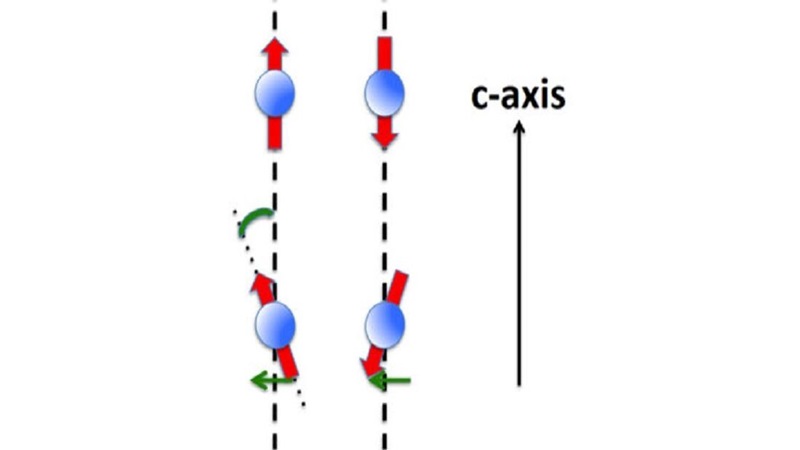Dirac matter is an intriguing class of materials with rather peculiar properties: electrons in these materials behave as if they had no mass. The most prominent Dirac material is graphene, but further members have been discovered during the past 15 years or so. Each one of them serves as a rich playground for exploring ‘exotic’ electronic behaviours, some of which hold the promise to enable novel components for electronics.
However, even if Dirac matter and other so-called topological materials — in which electrons behave in similarly unexpected ways — are among the currently most intensively studied condensed-matter systems, there are only very few examples where the topology of the electronic bands is connected in a well-defined manner to the magnetic properties of the materials.
One material in which such interplay between topological electronic states and magnetism has been observed is CaMnBi2, but the mechanism connecting the two remained unclear.
Writing in Physical Review Letters [1], postdoc Run Yang and PhD student Matteo Corasaniti from the Optical Spectroscopy group of Prof. Leonardo Degiorgi at the Laboratory for Solid State Physics, working with colleagues at Brookhaven National Laboratory (US) and the Chinese Academy of Sciences in Beijing, now report a comprehensive study in which they provide clear evidence that it is a slight nudge on the magnetic moments, known as spin canting, that provokes substantial changes in the electronic band structure.

